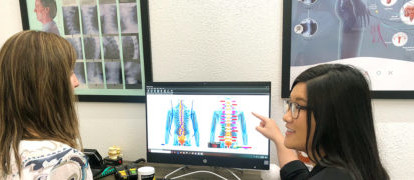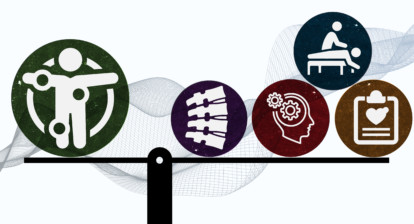SPEAKER: Scott Rosa, DC
TRACK: Science
Dr. Scott Rosa has devoted his life to studying and improving the effects of trauma and misalignment to the upper cervical spine, specifically the craniocervical junction. Injuries to the head and neck are not always visible with the typical imaging technology used to help diagnose patients. Rosa’s patented Dynamic Upright Magnetic Resonance Imaging (DMRI) technology helps with making diagnoses, which shapes the care he provides. Former Chicago Bears quarterback Jim McMahon received treatment from Dr. Rosa after suffering three concussions and early dementia. Dr. Rosa’s DMRI revealed significant disruption in his craniocervical junction that resulted in cerebrospinal fluid (CSF) pooling his frontal lobe. Dr. Rosa’s Trauma Imaging Foundation website writes: “McMahon says that Dr. Rosa’s TIF research and treatments literally ‘saved my life.’”
About Dr. Rosa: Dr. Rosa, who has 32 years of experience, applies a non-invasive Image Guided Atlas Treatment™ and diagnostic imaging methods to improve the health of his patients. Educated at Palmer College of Chiropractic, he has Atlas Orthogonal Chiropractic post-graduate training. He’s had extensive post-doctoral training with numerous certifications, such as a Certification in Motor Vehicle Crash Forensic Risk Analysis, a Master Certification in Whiplash and Brain Injury Traumatology and a Certification in Digital Motion X-Ray Functional Imaging & Anatomy. As founder and president of the Trauma Imaging Foundation, a non-profit research organization, Rosa is dedicated to careful analysis and furthering imaging technology. On the foundation’s website, the organization states the methods and protocol he has developed give the doctor a better view of the delicate structures of the spine. “Difficult and often missed diagnoses are clearly and quickly seen, allowing for swift, precise, and more cost-effective treatment to be given to the patient,” the website states.
WAVE 20: This year at the WAVE, Dr. Rosa will dig into finding and correcting misalignments in the upper cervical spine, and why the craniocervical junction between the base of the skull and the atlas (C1) vertebra is important. Issues in this area can cause displacement and deformation in the skull and spinal canal, disrupting the flow of cerebrospinal fluid, or CSF. He will discuss how these complications have been shown to play a part in neuro-inflammatory and neurodegenerative brain diseases in adults, and he will discuss how imaging studies are important for understanding injuries, and how accurate imagining is crucial for caring for trauma patients. In an article for Karger Publishers, Rosa wrote: “The craniocervical junction is the most complex area of the spinal axis. Due to its complexity, it is extremely vulnerable to injuries to the soft tissue stabilizing ligaments and membranous structures. Proper imaging in this area is an essential key to proper diagnosis directing towards the most appropriate and safe treatment options when injury occurs.”
Looking ahead to August: Thanks to many years of research and practice. Dr. Rosa provides a unique perspective on chiropractic. Learn from his expertise on adjusting the craniocervical junction and the importance of CSF flow, and bring that valuable knowledge back to your own practice.
Register now! Hear from Dr. Rosa and about 20 other leaders in the field of chiropractic at the WAVE 20, Aug. 21-23, 2020, in San Francisco’s Bay Area. This year, Life West is bringing the WAVE home to its Hayward, California campus! Learn more about what’s happening at the WAVE, how many CE credits participants can earn and more at wave.lifewest.edu.








